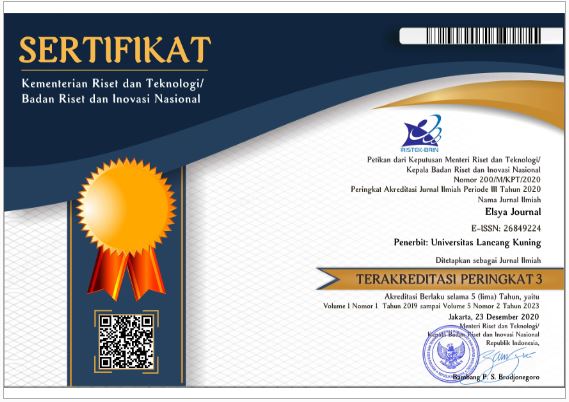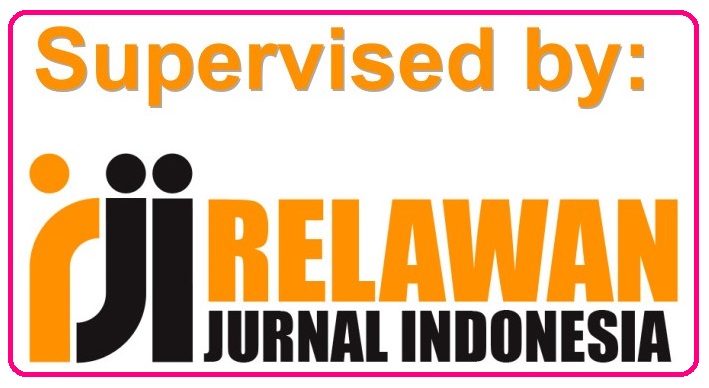EFL High School Students’ Satisfaction in Online Learning and Expectations Towards Blended Learning: An Investigation
Abstract
This study aims to identify students' satisfaction with online learning and their expectations of blended learning in the post-pandemic era in a senior high public school in North Bali, Indonesia. The research employed an explanatory sequential mixed-method design using questionnaires and interviews, to gather data from 179 grade 12 senior high school students. The questionnaire and interview guide were validated with face, content, empirical validity, and reliability. The interview session involved 5 students with high satisfaction scores and 5 students with low satisfaction scores from the result of the questionnaire. The results showed that students had a mode score of 4, indicating students feel satisfied with online learning during COVID-19. Based on the four factors, the result of students’ satisfaction in online learning such as the teacher factor having neutral scores, the interaction factor having satisfied scores, the technology factor having satisfied scores, and the course management factor having satisfied scores. The interview session shows that students expressed their expectations for direct interaction with teachers and classmates and had expectations for factors, such as teaching methods, ease of materials, direct communication with teachers, interaction with classmates, technology use, and variety in learning resources. This research provides insights for teachers to improve student satisfaction with online learning and blended learning practices.
Downloads
References
Afrilyasanti, R., Cahyono, B. Y., & Astuti, U. P. (2017). Indonesian EFL students’ perceptions on the implementation of online classroom model. Journal of Language Teaching and Research, 8(3), 476–484. https://doi.org/10.17507/jltr.0803.05
Aji, W. K., Ardin, H., & Arifin, M. A. (2020). Blended learning during pandemic corona virus: Teachers’ and students’ perceptions. IDEAS: Journal on English Language Teaching and Learning, Linguistics and Literature, 8(2), 632–646. https://doi.org/10.24256/ideas.v8i2.1696
Alrajafi, G. (2021). The use of English in Indonesia: Status and influence. SIGEH ELT : Journal of Literature and Linguistics, 1(1), 1–10. https://doi.org/10.36269/sigeh.v1i1.355
Anwar, I. W., & Wahid, J. H. (2021). Learners’ perception on online learning implementation during COVID-19 pandemic. Journal of Languages and Language Teaching, 9(2), 126. https://doi.org/10.33394/jollt.v9i2.3576
Ariawan, S. (2021). Perception and expectation of EFL students on ideal online learning: A survey study in an Indonesian islamic higher education. International Journal of English and Applied Linguistics (IJEAL), 1(3), 250–257. https://doi.org/10.47709/ijeal.v1i3.1241
Arthur-Nyarko, E., Agyei, D. D., & Armah, J. K. (2020). Digitizing distance learning materials: Measuring students’ readiness and intended challenges. Education and Information Technologies, 25(4), 2987–3002. https://doi.org/10.1007/s10639-019-10060-y
Aşık, A., Köse, S., Yangın Ekşi, G., Seferoğlu, G., Pereira, R., & Ekiert, M. (2020). ICT integration in English language teacher education: insights from Turkey, Portugal and Poland. Computer Assisted Language Learning, 33(7), 708–731. https://doi.org/10.1080/09588221.2019.1588744
Ataizi, M., & Komur, İ. A. (2021). Teaching writing skills in EFL classes with blending learning. Journal of Educational Technology and Online Learning, 4(4). https://doi.org/10.31681/jetol.932682
Ayu, M. (2020). Online learning: Leading e-learning at higher education. The Journal of English Literacy Education: The Teaching and Learning of English as a Foreign Language, 7(1), 47–54. https://doi.org/10.36706/jele.v7i1.11515
Balasubramanian, K., Jaykumar, V., & Fukey, L. N. (2014). A study on "Student preference towards the use of Edmodo as a learning platform to create responsible learning environment”. Procedia - Social and Behavioral Sciences, 144, 416–422. https://doi.org/10.1016/j.sbspro.2014.07.311
Baloran, E. T., Hernan, J. T., & Taoy, J. S. (2021). Course satisfaction and student engagement in online learning amid COVID-19 pandemic: A structural equation model. Turkish Online Journal of Distance Education, 22(4), 1–12. https://doi.org/10.17718/tojde.1002721
Basith, A., Rosmaiyadi, R., Triani, S. N., & Fitri, F. (2020). Investigation of online learning satisfaction during COVID-19: In relation to academic achievement. Journal of Educational Science and Technology (EST), 6(3), 265–275. https://doi.org/10.26858/est.v1i1.14803
Basuony, M. A. K., EmadEldeen, R., Farghaly, M., El-Bassiouny, N., & Mohamed, E. K. A. (2020). The factors affecting student satisfaction with online education during the COVID-19 pandemic: an empirical study of an emerging Muslim country. Journal of Islamic Marketing, 12(3), 631–648. https://doi.org/10.1108/JIMA-09-2020-0301
Bolliger, D. U., & Martindale, T. (2004). Key factors for determining students satisfaction in online courses. International Journal on E-Learning, 61–67. https://doi.org/10.5771/9783845279893-1090-1
Cahapay, M. B. (2020). Rethinking education in the new normal post-COVID-19 era: A curriculum studies perspective. Aquademia, 4(2), ep20018. https://doi.org/10.29333/aquademia/8315
Cakrawati, L. M. (2017). Students’ perception on the use of online learning platforms in EFL classroom. English Language Teaching and Technology Journal (ELT-Tech Journal), 1(1), 22–30. http://ejournal.upi.edu/index.php/ELTTech/article/view/9428%0Ahttps://ejournal.undiksha.ac.id/index.php/JPBI/article/view/38289
Churiyah, M., Sholikhan, S., Filianti, F., & Sakdiyyah, D. A. (2020). Indonesia education readiness conducting distance learning in COVID-19 pandemic situation. International Journal of Multicultural and Multireligious Understanding, 7(6), 491. https://doi.org/10.18415/ijmmu.v7i6.1833
Dastidar, S. G. (2021). The impact of students’ perceptions of online learning environments on students’ satisfaction in the context of COVID-19 pandemic. Studies in Learning and Teaching, 2(3), 61–72. https://doi.org/10.46627/silet.v2i3.84
Faize, F. A., & Nawaz, M. (2020). Evaluation and improvement of students’ satisfaction in online learning during COVID-19. Open Praxis, 12(4), 495. https://doi.org/10.5944/openpraxis.12.4.1153
Famularsih, S. (2020). Students ’ experiences in using online learning applications due to COVID-19 in English classroom. Studies in Learning and Teaching, 1(2), 112–121.
Febrianto, P. T., Mas’udah, S., & Megasari, L. A. (2020). Implementation of online learning during the COVID-19 pandemic on Madura island, Indonesia. International Journal of Learning, Teaching and Educational Research, 19(8), 233–254. https://doi.org/10.26803/ijlter.19.8.13
Fuad, M., Ariyani, F., Suyanto, E., & Shidiq, A. S. (2020). Exploring teachers’ tpck: Are Indonesian language teachers ready for online learning during the COVID-19 outbreak? Universal Journal of Educational Research, 8(11B), 6091–6102. https://doi.org/10.13189/ujer.2020.082245
Geith, C., & Vignare, K. (2008). Access to education with online learning and open educational resources: Can they close the gap? Online Learning, 12(1), 105–126. https://doi.org/10.24059/olj.v12i1.39
Giatman, M., Siswati, S., & Basri, I. Y. (2020). Online learning quality control in the pandemic COVID-19 era in Indonesia. Journal of Nonformal Education, 6(2), 168–175. https://journal.unnes.ac.id/nju/index.php/jne
Gopal, R., Singh, V., & Aggarwal, A. (2021). Impact of online classes on the satisfaction and performance of students during the pandemic period of COVID 19. Education and Information Technologies, 26(6), 6923–6947. https://doi.org/10.1007/s10639-021-10523-1
Guo, C., Xu, Z., Fang, C., & Qin, B. (2022). China survey report on the online learning status of high schools during the COVID-19 pandemic. ECNU Review of Education, 1–13. https://doi.org/10.1177/20965311221089671
Gustriani, A., & Hamzah. (2021). English undergraduate students’ expectation of online learning for english speaking skill. Proceedings of the Eighth International Conference on English Language and Teaching (ICOELT-8 2020), 579, 29–33. https://doi.org/10.2991/assehr.k.210914.006
Hendrawaty, N., Angkarini, T., & Retnomurti, A. B. (2021). EFL undergraduate students ’ perceptions of online learning applications during the COVID-19 outbreak. Jurnal Pendidikan Dan Pengajaran, 54(1), 110–119. https://doi.org/http://dx.doi.org/10.23887/jpp.v54i1
Hermawan, D. (2021). The rise of E-Learning in COVID-19 pandemic in private university: Challenges and opportunities. IJORER : International Journal of Recent Educational Research, 2(1), 86–95. https://doi.org/10.46245/ijorer.v2i1.77
Hofstede, G. (1986). Cultural difference in teaching and learning. International Journal of Intercultural Relations, 10, 301–320.
Kanık, M. (2021). Students’ perception of and engagement in reactive online education provided during the COVID-19 pandemic. International Online Journal of Education and Teaching (IOJET), 8(2), 2148–2225.
Kimura, N., & Farrer, J. (2020). Online learning during the COVID-19 pandemic: Social interaction and its impacts on student satisfaction. Universal Journal of Educational Research, 1–16.
Krstić, S. V. M., & Radulović, L. R. M. (2021). Evaluating distance education in Serbia during the COVID-19 pandemic. Problems of Education in the 21st Century, 79(3), 467–484. https://doi.org/10.33225/pec/21.79.467
Manurung, G. N., Manurung, K., Mertosono, S. R., & Kamaruddin, A. (2020). Perceptions of EFL learners in the implementation of blended learning post-natural disaster at a university in Indonesia. Theory and Practice in Language Studies, 10(8), 959–968. https://doi.org/http://dx.doi.org/10.17507/tpls.1008.15
Melvina, Lengkanawati, N. S., Wirza, Y., Alicia, D., & Yulmiati. (2021). EFL learners’ view on online learning implementation during COVID-19 outbreaks. 513, 351–357. https://doi.org/10.2991/assehr.k.201230.130
Meşe, E., & Sevilen, Ç. (2021). Factors influencing EFL students’ motivation in online learning: A qualitative case study. Journal of Educational Technology & Online Learning, 4(1), 11–22. http://dergipark.org.tr/jetolDoi:http://doi.org/10.31681/jetol.817680
Miles, M. B., & Huberman, A. M. (1994). Qualitative data analysis. In SAGE Publication (Second Edi, pp. 1–337).
Moore, M. G., & Anderson, W. G. (2003). Handbook of distance education. In Choice Reviews Online (Vol. 41, Issue 02). https://doi.org/10.5860/choice.41-1050
Moore, M. G., & Kearsley, G. (1996). Distance education: A system view of online learning (Third Edit). Wadsworth Cencage Learning.
Muthuprasad, T., Aiswarya, S., Aditya, K. S., & Jha, G. K. (2021). Students’ perception and preference for online education in India during COVID -19 pandemic. Social Sciences & Humanities Open, 3(1), 100101. https://doi.org/10.1016/j.ssaho.2020.100101
Naaj, M. A., Nachouki, M., & Ankit, A. (2012). Evaluating student satisfaction with blended learning in a gender-segregated environment. Journal of Information Technology Education:Research, 11(1), 185–200. https://doi.org/10.28945/1692
Ngafif, A. (2021). Online learning perception during COVID-19 pandemic. 10(1), 75–82.
Ngo, J., Budiyono, Y., & Ngadiman, A. (2021). Investigating student satisfaction in remote online learning settings during COVID-19 in Indonesia. Journal of International and Comparative Education, 10(2), 73–95. https://doi.org/10.14425/jice.2021.10.2.0704
Nie, T., & Hu, J. (2018). EFL students satisfaction with the college English education in the MOOC: An empirical study. 182(Iceemr), 92–95. https://doi.org/10.2991/iceemr-18.2018.19
Olbata, Y., Fatmawati, R., & Tiran, Y. (2022). Is it enjoying or burdening? students perceptions on home learning and online learning. Wiralodra English Journal, 6(1), 62–73. https://doi.org/10.31943/wej.v6i1.163
Pham, T. N., & Nguyen, G. H. (2021). An investigation of student satisfaction in an online language learning course. International Journal of Web-Based Learning and Teaching Technologies, 16(5), 121–136. https://doi.org/10.4018/IJWLTT.20210901.oa7
Pinto, M. B., & Anderson, W. (2013). A little knowledge goes a long way: Student expectation and satisfaction with hybrid learning. Journal of Instructional Pedagogies, 10, 1–12.
Pokhrel, S., & Chhetri, R. (2021). A literature review on impact of COVID-19 pandemic on teaching and learning. https://doi.org/10.1177/2347631120983481
Prasetya, T. A., Harjanto, C. T., & Setiyawan, A. (2020). Analysis of student satisfaction of E-learning using the end-user computing satisfaction method during the COVID-19 pandemic. Journal of Physics: Conference Series, 1700(1). https://doi.org/10.1088/1742-6596/1700/1/012012
Pratiwi, N. M. F., Wardani, D. K., & Sangka, K. B. (2022). Senior high school students and teachers ’ perceptions of Economics online learning in Badung regency. 276–288.
Press, I. (2006). Patient satisfaction: Understanding and managing the experience of care (2nd editio).
Puentedura, R. (2006). Transformation, technology, and education. Strengthening Your District Through Technology, 8. http://www.hippasus.com/rrpweblog/archives/2006_11.html
Rapanta, C., Botturi, L., Goodyear, P., Guàrdia, L., & Koole, M. (2020). Online university teaching during and after the COVID-19 crisis: Refocusing teacher presence and learning activity. Postdigital Science and Education, 2(3), 923–945. https://doi.org/10.1007/s42438-020-00155-y
Rawashdeh, A. Z. Al, Mohammed, E. Y., Arab, A. R. Al, Alara, M., & Al-Rawashdeh, B. (2021). Advantages and disadvantages of using E-learning in university education: Analyzing students’ perspectives. Electronic Journal of E-Learning, 19(2), 107–117. https://doi.org/10.34190/ejel.19.3.2168
Rigo, F., & Mikus, J. (2021). Asynchronous and synchronous distance learning of english as a foreign language. In Media Literacy and Academic Research (Vol. 4, Issue 1). https://www.mlar.sk/wp-content/uploads/2021/04/6_Rigo_Mikus.pdf
Risten, R., & Pustika, R. (2021). Exploring students’ attitude towards English online learning using Moodle during covid-19 pandemic at SMK Yadika Bandarlampung. Journal of English Language Teaching and Learning, 2(1), 8–15. http://jim.teknokrat.ac.id/index.php/english-language-teaching/index
Rusli, R., Hashim, H., Yunus, M. M., Zakaria, N. Y. K., & Norman, H. (2019). Leveraging the use of social media in teaching writing: A qualitative investigation among ESL pre-service teachers. International Journal of Interactive Mobile Technologies, 13(11), 85–94. https://doi.org/10.3991/ijim.v13i11.10910
Saif, N. I. (2014). The effect of service quality on student satisfaction: A field study for health services administration students. International Journal of Humanities and Social Science, 4(8), 172–181.
Sakina, R., Kulsum, E. M., & Syaepul Uyun, A. (2020). Integrating technologies in the new normal: A study of blended learning. International Journal of Quantitative Research and Modeling, 1(4), 183–193. https://doi.org/10.46336/ijqrm.v1i4.90
Salam, R., Rahmawati, S., Novita, N., Satria, H., & Rafi’i, M. (2022). Management of technology in the higher education sector in Aceh adoption and measurement during the pandemic COVID-19. Sinkron, 7(1), 214–221. https://doi.org/10.33395/sinkron.v7i1.11276
Santosa, M. H. (2017). Learning approaches of Indonesian EFL gen Z students in a flipped learning context. Journal on English as a Foreign Language, 7(2), 183. https://doi.org/10.23971/jefl.v7i2.689
Santosa, M. H., Ratminingsih;, N. M., & Adnyani, L. D. S. (2021). Students’ learning approachers in the EFL emergency online learning context. JEELS (Journal of English Education and Linsguistics Studies, 8(2), 185–218.
Saroh, M., & Arifmiboy. (2022). Students’ satisfaction on using WhatsApp for online learning at the fifth semester students of English education program in IAIN Bukittinggi. Jurnal Pendidikan Tambusai, 6(1), 2703–2714.
Shaid, N. A., Kamruzaman, F. M., & Sulaiman, N. A. (2021). Online learning during on going COVID-19 pandemic: A survey of students’ satisfaction. International Journal of Academic Research in Business and Social Sciences, 11(7). https://doi.org/10.6007/ijarbss/v11-i7/10557
Simamora, R. M. (2020). The challenges of online learning during the COVID-19 pandemic: An essay analysis of performing arts education students. Studies in Learning and Teaching, 1(2), 86–103. https://doi.org/10.46627/silet.v1i2.38
Simatupang, M. S., & Peter, R. (2020). Redesign online learning during the pandemic of COVID-19. The Asian ESP Journal, 135–149.
Sözen, E., & Güven, U. (2019). The effect of online assessments on students’ attitudes towards undergraduate-level geography courses. International Education Studies, 12(10), 1. https://doi.org/10.5539/ies.v12n10p1
Stein, J., & Graham, C. R. (2020). Orientation to blended teaching and learning. In Essentials for Blended Learning. https://doi.org/10.4324/9780203075258-7
Sulisworo, D., Wulandari, Y., Effendi, M. S., & Alias, M. (2021). Exploring the online learning response to predict students’ satisfaction. Journal of Physics: Conference Series, 1783(1). https://doi.org/10.1088/1742-6596/1783/1/012117
Taherdoost, H. (2017). Validity and reliability of the research instrument: How to test the validation of a questionnaire survey in a research. September. https://doi.org/10.2139/ssrn.3205040
Taufik, & Alam, F. A. (2022). The survey on students’ satisfaction degree towards online learning during COVID-19 pandemic condition. Jelita, 3(1), 44–56. https://doi.org/10.56185/jelita.v3i1.94
Tongco, M. D. C. (2007). Purposive sampling as a tool for informant selection. Ethnobotany Research and Applications, 5, 147–158. https://doi.org/10.17348/era.5.0.147-158
Topala, I., & Tomozii, S. (2014). Learning satisfaction: Validity and reliability testing for students’ learning satisfaction questionnaire (SLSQ). Procedia - Social and Behavioral Sciences, 128(April 2014), 380–386. https://doi.org/10.1016/j.sbspro.2014.03.175
Tümen-Akyıldız, S., Çelik, V., & Ahmed, K. H. (2021). The impact of COVID-19 pandemic on EFL classes through the lenses of secondary learners. Shanlax International Journal of Education, 9(4), 389–406. https://doi.org/10.34293/education.v9i4.4210
Vagias, W. M. (2006). Likert-type scale response anchors. Clemson International Institute for Tourism & Research Development, 3–4.
Wagiono, F., Shaddiq, S., & Junaidi, F. (2021). Implementation of blended learning during COVID-19 pandemic on civic education subjects in millenial generation era. Edunesia : Jurnal Ilmiah Pendidikan, 3(1), 36–44. https://doi.org/10.51276/edu.v3i1.213
Wirantaka, A., & Fijanah, M. S. (2022). Effective use of Google Translate in writing. Proceedings of the International Conference on Sustainable Innovation Track Humanities Education and Social Sciences (ICSIHESS 2021), 626(Icsihess), 15–23. https://doi.org/10.2991/assehr.k.211227.003
Woo, K., Gosper, M., McNeill, M., Preston, G., Green, D., & Phillips, R. (2008). Web-based lecture technologies: blurring the boundaries between face-to-face and distance learning. Alt-J, 16(2), 81–93. https://doi.org/10.1080/09687760802315895
Yapici, I. U., & Akbayin, H. (2012). High school students’ views on blended learning. Turkish Online Journal of Distance Education-TOJDE, October, 125–139.
Zainuddin, Z., & Keumala, C. M. (2018). Blended learning method within Indonesian higher education institutions. Jurnal Pendidikan Humaniora, 6(2), 69–77.
Zhong, Q. M. (2018). The evolution of learner autonomy in online environments: A case study in a New Zealand context. Studies in Self-Access Learning Journal, 9, 71–85. https://doi.org/10.37237/090106
- Author retains the copyright and grants Elsya Journal the right of first publication of the work simultaneously licensed under the Creative Commons Attribution-ShareAlike 4.0 License that allows others to share the work with an acknowledgment of the work's authorship and initial publication in this journal
- The author is able to enter into separate, additional contractual arrangements for the non-exclusive distribution of the journal's published version of the work (e.g., post it to an institutional repository or publish it in a book) with the acknowledgment of its initial publication in this journal.
- The author is permitted and encouraged to post his/her work online (e.g., in institutional repositories or on their website) prior to and during the submission process, as it can lead to productive exchanges, as well as earlier and greater citation of the published work (See The Effect of Open Access).









 Elsya Journal is licensed under
Elsya Journal is licensed under 